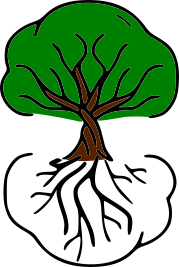In fall of 2021, Serafina came home from a festival out in York, PA with a strange fruit. She called it a Pawpaw, and said it is a native fruit to this region folks are trying to bring back. I had never heard of it before, and she shared some with me to taste. It is a ‘lima bean’ shaped fruit, green skin, with a custard like inside.
Jump to 2023, where we were both standing cold and wet in the freezing rain, to bring back a bounty of Pawpaws to Pittsburgh. Just what is it about this fruit that folks go crazy for?
Pawpaws sold at York’s PawPaw festival
Before diving into why we decided to drive all the way out to York, PA to get some, let’s take a step back and talk about what the Pawpaw even is. A lot of the information I found about this is in the book Pawpaw: In Search of America’s Forgotten Fruit by Andrew Moore. Instead of doing a full “Literature Appetizer on it, I thought I would include the information here. It is an excellent read for folks who want to meet the people behind bringing the Pawpaw to the public spotlight.
Asimina Triloba is fruit related to tropical fruits of Central and South America. The thought is that it migrated north and adapted for colder climates with the help of prehistoric megafauna like Giant Sloths. The range is slowly moving northward in part due to the climate crisis, but below is a 2015 map of the typical range.
The fruit itself ranges from 4-6 inches typically, with five large seeds on the inside. It is best to not eat the seeds or skin (we found it best to eat with a spoon). The tree takes about 8 years to produce fruit from seed and they need another tree close by to cross pollinate.
What I found the most fascinating in the book was Chapter Four: A Tale of Two Fruits. Way back
“In 1916, the American’s Genetics Association announced a contest to find the best pawpaws in America. The purpose of the contest was to collect genes of superior wild pawpaws, from which a serious, scientific breeding experiment could be conducted.”
America at the time was in a craze to ‘tame the nation’s fruit.’ From pecans to cranberries, in the early 1900s scientists studied how to grow these fruits as crops.
One of the biggest success stories was with the blueberry. Frederick Vernon Coville found out basics like ‘blueberries need moist, high acidic soil.’ No one had done the basic scientific work for the fruit in North America. Of course there was traditional and tribal knowledge that was lost, so most scientists were working from square one.
Pawpaw also had a head scientist: George A. Zimmerman. His work ended when he died unexpectedly. No one else picked up his work, so the Pawpaw remained untamed for decades. The work was picked back up in the 1980s.
I personally feel like we are in a ‘second wave’ of the Cult of Pawpaw. It is becoming something folks are hearing more about, instead of just a fruit of the past. We are also experiencing huge interest in native plants and healthy foods, which pawpaws slot right into. But I think the most alluring thing about them is that they have yet to be tamed. Yes, there are growers making different varieties but no one has been able to crack full scale industrial farming of pawpaws. So folks start to see the same folks at the same festivals, and get more excited when others join the cult.
I couldn’t find the page number, but to paraphrase one of the growers “If you want to kill a pawpaw tree, give it a lot of attention and try to keep it alive.” They are still a plant that thrives when left alone.
In winter 2021, Serafina and I dutifully placed the seeds in the fridge to overwinter. We expected the seeds to begin to sprout after following all the online guides, but they all looked dead. While we were sad, we said “well, let’s just throw them into the ground to see what happens.”
As of this summer we have six pawpaw saplings growing next to the fence. We are well on our way to being full cult members.





